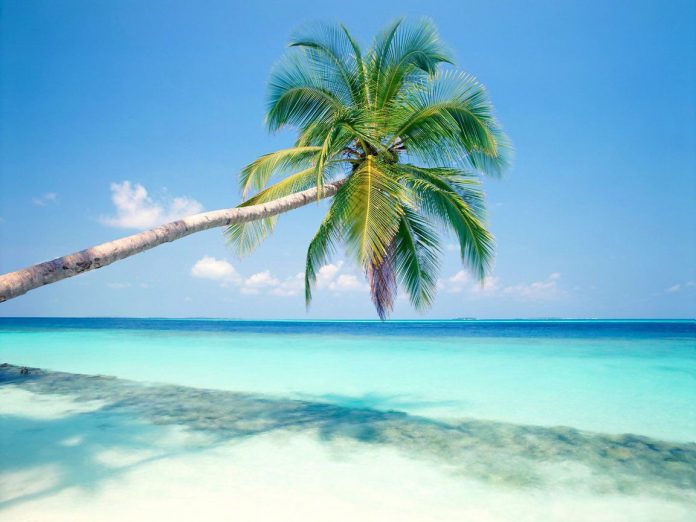Etnia Nativa is where you can connect with the mystical aspects of Aruba, its culture, and its traditional heritage. The platform encourages visitors to engage with our island`s unique cultural setting.
During this episode, we want to share the mysticism of an iconic plant of the Caribbean region that has great cultural and religious significance in certain Western Pacific societies, appearing in their mythologies, songs, and oral traditions.
If you think of the Caribbean Sea, the image of a couple of coconut trees and a hammock strung between them surely comes to mind, since it is difficult to imagine a Caribbean beach without them. However, despite being a cultural icon of the tropics, the coconut tree, to the surprise of some, is not native to these shores.
Coconuts were first domesticated by the Austronesian peoples in Southeast Asia and spread during the Neolithic via their seaborne migrations. They played a critical role in the long sea voyages by providing a portable source of food and water as well as building materials for boats. Coconuts were also later spread along the coasts of the Indian and Atlantic Oceans by South Asian, Arab, and European sailors. Based on these separate introductions, the place of origin of the coconut is a disputed issue; while many consider it to come from South Asia, fossil records from New Zealand indicate that similar, although smaller, plants grew there at least 15 million years ago. There are also older fossils discovered in different regions of India, with coconuts appearing in Hindu literature from the 2nd to the 1st century BC, where they state that between 575 and 608 B.C., a sultan planted a coconut garden about 25 km long, which would most likely be the first recorded coconut plantation.
During the colonial era and the Columbian exchange, some coconut palm varieties were introduced to the American continent through Europeans, although some theories speak of a possible introduction of coconut palms from the Pacific through Panama and by Austronesian sailors.
We know that when Europeans “discovered” the coconuts, they quickly realized how easy it would be to transport sterilized water (coconut water) and nutrients aboard ships, embarking on long voyages across saltwater where freshwater was scarce and often contaminated. After being introduced like this in the middle of the 16th century, the coconut in the Caribbean region was planted afterwards. There is written evidence of the first exports of coconuts from the insular Caribbean in 1850, and it would be a few years later and until the early 1900s that the boom in the coconut industry began.
An industry that had its ups and downs but that came to export considerable quantities from the Caribbean islands of Cuba, Jamaica, and Trinidad and Tobago.
There are 13 different types of palms that produce edible coconuts around the world. In the Caribbean, the coconut palm was introduced by Spaniards who brought it from the Canary Islands. In Aruba, the coconut tree did not develop as a major industry; however, beautiful plantations were erected into the landscape, with over 15.000 trees. Those who owned private property land with accessibility to underground water, like in Balashi, Rooi Lamunchi, Daimari, Andicuri, Plantage Tromp, Basiruti area, etc., decided to invest in coconut plantations. Aruban’s demographics and its original landscape have also experienced changes since the mid-18th century until the present, which is why some of these long extensions of coconut palms could not resist deforestation and a lack of rainfall.
Basiruti on the West Coast was a place where hundreds of coconut trees stood out along the coast, but here the development of the emerging hotel and tourist industries also changed the contemporary landscape to which the locals were used. Currently, we see some coconut trees along part of the boulevard and in some abandoned plantations. On the other hand, many hotels were beautified with coconut palms and other palm species.
As something curious, we also share that the name “coconut” can refer to the coconut palm or seed or fruit. The term coconut comes from the old Portuguese word coco, meaning “head” or “skull”, from the three indentations in the coconut shell that resemble facial features. So if you look for a face in the next coconut you find, you will surely find it!
If you are keen to explore Aruba’s deep heritage, Etnia Nativa is a place to connect. A private residential, a house which integrates natural and reused materials, bursting with art, culture, and island heritage. Each visitor is guided through an authentic encounter with owner-builder and cultural expert. Booking a magical glimpse inside Etnia Nativa WhatsApp +297 592 2702 etnianativa03@gmail.com




















